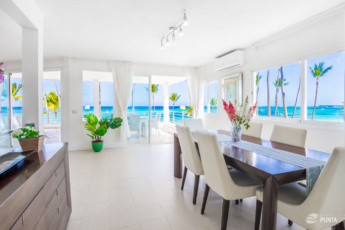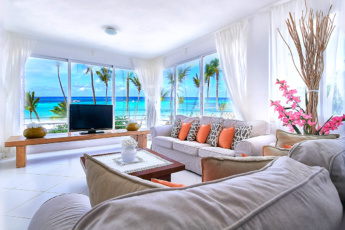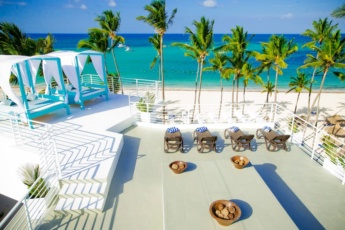Dominican Republic Carnival 2026 – Dates, History, Facts, Traditions and Best Places to Celebrate
For those who want to decorate their lives with bright colors and enjoy incredible experiences, we recommend taking into account the carnival in the Dominican Republic in February.
Traditionally, Brazil is considered the birthplace of carnivals. Lots of tourists come here just for the impressions of the colorful shows taking place on the streets of the country. But not every traveler knows about the Dominican version of this entertainment.

Dominican Republic Carnival
The history of the Dominican Republic Carnival
For the first time, such events were here for a very long time. In the distant and gloomy Middle Ages, processions through the streets of people dressed as Moors were supposed to support the morale of the Spanish conquistadors. Then the Holy Inquisition tried with all its might to strengthen the power of the Catholic conquerors on the island.
From 1822 to 1844, the Dominican Republic was under Haitian occupation, and such events were strictly prohibited. After the war of liberation, the Republic gained state independence and the carnival became a symbol of this event.
Since that memorable time, every year on February 27, every village or city in the Dominican Republic is colored with all the colors of the rainbow from the unusual and brilliant costumes of its inhabitants.
Almost every family prepares for this event several months in advance, as the costumes and masks for carnival characters are not cheap. Some of the most inventive residents even seek sponsors for such performances, persuading them to invest in the creation of intricate images of street performers.

Dominican Republic Carnival costumes
February Carnival – the main event of the DR
Every year in February, the squares and streets of the cities of the Republic are transformed beyond recognition! It is in the last month of winter that the main cultural event, the carnival, is held in the country.
The holiday unites the entire local population, regardless of social strata. Literally, everyone takes to the streets, becomes participants or spectators of a colorful show.
And no matter how much money is in the bank account or if there is none at all, no matter what for lunch or dinner – the fun picks up with its wave and “carries”, making you enjoy life and the sun.
The Dominican February carnival is often compared to the Brazilian one. Indeed, the scale of both shows is truly gigantic, but the Dominican parade will perhaps be a little “scary” and there is an excuse for this – it is dedicated to the devil. Yes, yes, lame and incredibly intimidating.
According to legend, once upon a time God was angry with the Devil and threw him to the ground. In the fall, the Prince of Darkness could not group and therefore injured his leg. So, he remained diablo cojuelo or lame devil.

Dominican Republic “scary” Carnival
How Carnival is celebrated in the Dominican Republic
Children and adults take to the streets of cities, put on ugly masks and greet life-size puppets and dancers with cries. Celebrations are held in Santo Domingo, Santiago, Punta Cana, Puerto Plata, and other tourist places. Over time, the traditions of the carnival have changed, mixed with the customs of the Indians and African slaves, who were brought by the same Europeans. Today’s carnival is the Dominican version, which is represented by each province of the country.
Interestingly, in the region of the northern coast, the motives of the Taino Indians prevail in carnival costumes, while in the southeast African costumes are considered traditional. So, moving from one region to another, tourists can see all the beauty and diversity of the main event of the Dominican Republic – the February Festival.
Dominican Carnival in Santo Domingo
The February carnival in the capital of the Dominican Republic is an incredibly colorful performance. Local residents choose the most “terrible” devil as their symbol, so the masks and life-size puppets here are notable for their considerable size and rather frightening appearance. Santo Domingo boasts a parade that has remained virtually unchanged since the Middle Ages.

Dominican Carnival in Santo Domingo
Locals say that “if there is no devil at the carnival, you are not in the Dominican Republic.” But besides this character, other folklore heroes also participate in the show. Staged scenes from comparsas make you bend over with laughter. And even without knowing the local language, it is impossible to make a mistake in the subject of the scenes. And there are many of them – from humorous to social and political.
The former Dominican dictator Rafael Trujillo shared the procession and did “social carnivals”. For example, for the elite, he opened private clubs with performances by famous dancers, musicians, and actors. But all this ended with the reign of the President, and the Dominican people again turned the carnival into a holiday for everyone.
The parade is a phased action, starting with the qualifying carnivals. Then it all ends with the main procession with the choice of the king and queen of the carnival, the best teams, and the final passage of the winners on the Malecon.

Carnival Parade in Santo Domingo
The differences of the Santo Domingo carnival
Carnival in Santo Domingo is different from others taking place in 31 provinces of the country. It is also noisy, cheerful, and bright here, but there is the main action – on the first Sunday of March they hold a “view of the devils”. Representatives from all provinces compete on the main city embankment for the prize of the winner of the costume and mask. And this show is definitely not to be missed.
Differences of the Santo Domingo Carnival
| Feature | Santo Domingo Carnival | Additional details |
|---|---|---|
| Location | Santo Domingo, capital city | The carnival takes place in the heart of the capital, along the main embankment. |
| Date | First Sunday of March | Marks the beginning of the country’s carnival season. |
| Main event | “View of the Devils” – a costume and mask competition | A showcase of traditional and modern costumes and masks. |
| Participants | Representatives from all 31 provinces of the Dominican Republic | Each province sends its best representatives, adding regional flair. |
| Competition focus | Costumes and masks | Spectacular and creative masks and costumes are judged for their uniqueness and design. |
| Atmosphere | Noisy, cheerful, and bright | Festive music, dancing, and energetic crowds create an electrifying atmosphere. |
| Special highlight | The unique “view of the devils” show on the main city embankment | A highly anticipated part of the carnival that showcases local culture and art. |
| Must-see feature | The carnival is a must-see for its lively and competitive spirit | An iconic event that attracts both locals and tourists alike, symbolizing the rich cultural heritage of the country. |
Santo Domingo Carnival time announcement
All is celebrated at the national level, so a few days before the start of the Dominican Carnival, the Ministry of Culture publishes an announcement of the program on the website and indicates the start time.
But even if they write that the marches will start at 10.00, this does not mean that it will be so. Most likely, all the most interesting will begin no earlier than 13.00. Punctuality is not the most popular phenomenon in the Dominican Republic, even at the state level.
For guests from other countries, the Ministry of Culture of the DR publishes an announcement of the Dominican Carnival program on its official website. The published program does not change, detailed information about the holding and interesting features of each stage is laid out.
Performances you can see at Santo Domingo parade
During the parade, only the best scenes and bright, creative groups will be shown. A special commission selects them. All participants must show their submissions and then patiently wait for permission or refusal. And if tourists have noticed a group rehearsal somewhere, this does not mean it will participate in the Carnival.
What you will have to spend on at Santo Domingo Carnival
Entertainment and performances, food and drinks – it’s all free. But if travelers want to get closer to the road to see the procession, they will have to bargain with the locals. You can also buy small ladder-stands, boxes, and crates.
Knowing about the event’s popularity, local shopkeepers and merchants prefer to make some money on those who want to see the parade. By the way, the higher the box or ladder is, the farther the viewer will be pushed back.
The legendary Dominican carnival in La Vega
The whole city is a huge stage! This is the legendary Dominican carnival in La Vega. Year after year, the parade never ceases to amaze the audience with its scope, beauty, and fun. So many original costumes, music, dances cannot be seen elsewhere.
In 2006, UNESCO recognized the La Vega Carnival as the best and most magnificent worldwide. La Vega has become the “heart” of the parade and therefore is considered one of the brightest in the country.

Dominican carnival in La Vega
Distinctive features of the La Vega Carnival
- In La Vega, they choose their own Carnival Queen, who in 99% of cases wins the competition in the capital. Hundreds of applicants participate in the selection and try to make their costumes, dances and songs the best. They also choose a children’s Queen, as well as the “Chief Devil”.
- On weekdays, preparatory processions take place in the city. Participants show their talents, demonstrate bright costumes, and then the best ones go to a special exhibition. It will be organized at the end of the La Vega Carnival.
- It is worth seeing all the parades of the Queens, the Devils, and the final “Procession of the Devils”. This passage is also called “the procession of the Lame Devils” and, perhaps, the costume show will be even more colorful than all the queens put together.
- Another obligatory item of the holiday is the shops of folk craftsmen. Prices for goods are not the lowest, but the products are of the highest quality. Local craftsmen offer a variety of goods, including souvenirs, crafts for the home, amazingly beautiful accessories, and useful gizmos.
To see all the fascinating things of the La Vega Carnival, you need to go to Pabellon bajo techo Fernando Terue. This indoor venue is the venue for concerts and the choice of the Queen. Processions are held on the streets of Padre Adolfo and Parque de las Flores.
February Carnival in Punta Cana
The resort region cannot boast of metropolitan scope, but the February Carnival in Punta Cana is an event that cannot be missed. Thanks to some “compactness”, the fun here is even more stormy, bright and literally, not knowing the shores in the good sense of the word.
The highlight of the carnival in Punta Cana
Dominican Carnival in Punta Cana is a place to see the unique costumes of African tribes. The fact is that this region was inhabited by people from the African continent, who have preserved traditions to this day. Therefore, one should not be surprised at the unusual color of the local Carnival. It is better to surrender to the riot of fun and fully enjoy the local dances, songs, interesting stories, and costumed scenes.

Carnival in Punta Cana
Time frame for the Punta Cana carnival
The festival in Punta Cana is a bright event in the life of local residents and guests. They prepare for it long before the start of the holiday. There are no special changes in the plan of events:
- Beginning on the first Sunday of February
- Ending on Independence Day of the Republic
- The mandatory choice of the Queen and the Lame Devil
Punta Cana Carnival will not let you miss a single performance – everything interesting passes along the main street near the airport. The main events are held from Friday to Sunday, and on weekdays, stage groups, representatives of various folklore groups, dancers, magicians, and merchants of various interesting things will delight guests and residents.
By the way, the tourist Punta Cana is an ideal place for travelers. Here, the traditions of free food are sacredly honored, which undoubtedly pleases all visitors.
Where to stay during Dominican Carnival
You will have to take care of the place of residence in advance, since hotel rooms, apartments and other premises are rented long before the start of the event. At the time of arrival, it may turn out that all the seats are occupied, and it simply will not work to outbid them.
If you are planning to visit the carnival in the Dominican Republic, we can offer you various housing options: studios, apartments, penthouses, and villas. It is possible to choose a property for any budget and number of people, with a swimming pool, jacuzzi, personal chef, and maid. We have a particularly large selection of ocean-view apartments in Punta Cana and luxury villas for big groups, friends, and families.
-

Bávaro White Sand 2BR Townhouse – Long Term Rental in Punta Cana
from $1700 / month View Details -

Condo for Rent in Punta Cana – Stunning Ocean View – Oreuga
from $599 / night View Details -

Beachfront Punta Cana Condo for Rent – Private Apartment with Stunning Oceanview, Bávaro, Los Corales
from $870 / night View Details -

Dream Apartments for Rent in Punta Cana – Oreuga Ocean View Paradise
from $865 / night View Details -

Event Venue for Rent in Bavaro Beach, Punta Cana
from $2000 / night View Details -

Quiet and Cozy Family Apartments for Rent – Directly on the Bavaro Beach, Punta Cana
from $549 / night View Details
Summing up the above
Beautiful beaches with palm trees, white sand, and sea, luxury hotels with a high level of service, and a favorable climate attract tourists worldwide. But another reason to come to the Dominican Republic is the colorful, extravagant, and incredibly bright Dominican carnival, which is ranked among the best in the world.
Each region has its own characteristics and customs, so we strongly recommend that you have time to visit at least the largest ones. Carnival in the Dominican Republic is a bright event in the life of local residents and guests!
Frequently Asked Questions
about Dominican Carnival
1. What is the Dominican carnival called?
The Dominican Carnival is a celebration of Dominican culture and identity. This is a riot of colors, a sea of joy, songs, dances, and music. It is impossible to remain dissatisfied with these bright actions. And even if tourists are not particularly fond of “folk art”, they still like republican celebrations.
2. Why does the Dominican Republic celebrate carnival?
The history of the Dominican Carnival begins in the distant 1520. The tradition was brought by Christopher Columbus and “appointed” the carnival as a time before Lent, that is, “gave the opportunity” for Europeans to have fun, and only then begin a long Lent with its restrictions.
The locals did not appreciate the beauty of Lent, but the bright holiday was to their liking. At that time, the Dominicans often held their cultural events. They were dedicated to local characters of folklore and pagan gods. But no one refused to “join” the Catholic saints, the triumph was only supplemented with new “characters”. And this tradition has survived to this day.
3. Where is carnival celebration in the Dominican Republic?
The Dominican Carnival is celebrated throughout the country. However, the largest festival processions take place in Santo Domingo, La Vega, Santiago, Punta Cana, and Puerto Plata.
4. What month is carnival in the Dominican Republic Carnival?
Carnivals in the Dominican Republic are held throughout February and part of March. Every Sunday parades take place in different cities across the country. The peak of celebrations is February 27th.
5. What happens at Carnival in the Dominican Republic?
The holiday unites the entire local population, regardless of social strata. Literally, everyone takes to the streets and becomes participants or spectators of a colorful show. Children and adults take to the streets of cities, put on ugly masks, greet life-size puppets and dancers with cries.
6. What is the most popular festival in the Dominican Republic?
Undoubtedly, the Dominican carnival is the biggest event of the year. Just imagine that for more than 1 month, bright and colorful parades and performances are held every week, in which everyone is present, regardless of age and status. It’s not just a holiday. It is a manifestation of the traditions and identity of the diverse Dominican culture.
Updated on: . Author:



